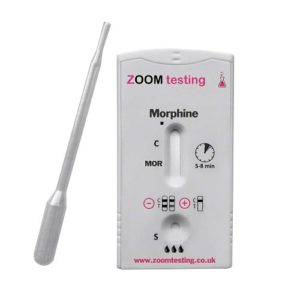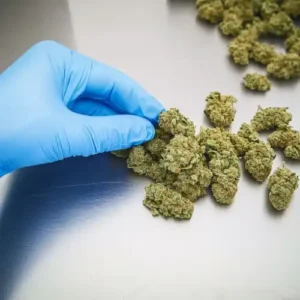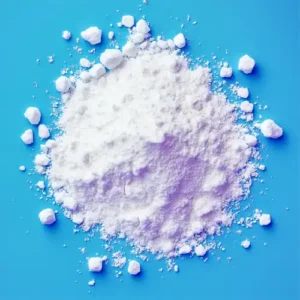In this article, we examine the cut-off levels of urine and saliva drug tests for Opiates.
What are Opiates?
The group of natural and synthetic drugs that have a morphine-like pharmacological action are known as Opiates. Primarily these drugs are designed for pain relief but they can also be abused for recreational purposes. Opiates are morphine and a variety of drugs that are structurally similar (eg, codeine, hydrocodone, hydromorphone, oxycodone).
The most commonly abused opiate is heroin (diacetylmorphine). Heroin is a synthetic opiate that is made from morphine.
Heroin is highly addictive and can lead to serious health problems, including overdose and death. When heroin is injected, it enters the bloodstream quickly, causing an intense rush of pleasure and euphoria. However, the effects of heroin are short-lived, and users may feel a sense of withdrawal shortly after the drug has worn off. As a result, they may feel compelled to use larger and larger amounts of the drug, which can lead to addiction.
What are Drug Test Cut-Off Levels?
One of the most important aspects of a drug test is the cut-off level. The cut-off level is a predetermined concentration above which the test is positive, below the cut-off, the test is negative.
The reason for a cut-off is to eliminate the possibility of a positive test due to casual exposure or other factors other than drug use that could cause the subject to appear to have drugs in their system.
The concentration of a drug is measured in nanograms per millilitre, written as ng/mL. A nanogram is a billionth of a gram, so a minuscule amount. There are approximately 30 millilitres in a fluid ounce.
These cut-off levels are established by the Substance Abuse and Mental Health Services Administration (SAMHSA) and are based on extensive research and testing. SAMHSA oversees the drug testing program for federal employees and sets the standards for workplace drug testing across the United States. The levesl set by SAMHS have been dopted in many countries internationally, including the UK.
The cut-off levels vary depending on the drug being tested, the type of test being conducted (urine, blood, saliva, or hair), and the purpose of the test.
For example, the cut-off level for THC (the active ingredient in marijuana) in a urine test for employment purposes is 50 ng/mL. This means that if a person has less than 50 ng/mL of THC in their urine, the test is negative. If they have 50 ng/mL or more, the test is positive.
Establishing Cut-Off Levels
Most drug tests have cut-offs set at a level that is as low as possible, while still minimising the potential for false positives. The cut-off allows for an optimal window for detecting the drug or drug metabolites that the test is looking for.
Cut-off levels are determined through careful consideration of factors such as the drug’s potency, the frequency and timing of the drug use, and the characteristics of the sample being tested. The cut-off level can vary depending on the type of drug being tested for as each drug has its unique set of metabolites and can remain in the system for different lengths of time.
Drug Test Cut-off Levels for Opiates
Cut-off levels will vary depending on the specific test type. The tests most widely used for workplace testing are urine and saliva tests. The cut-off level is significantly lower for saliva tests than for urine tests.
Cut-off Levels for Urine Drug Tests for Opiates
The standard cut-off for workplace urine drug tests for Opiates in the UK is typically 300 ng/mL. All of our drug test kits, including multi-panel kits that test for 5 drugs, 7 drugs, and 12 drugs, all use the standard 300 ng/mL cut-off level.
Urine tests for Opiates will detect drug usage for between 3 and 5 days after the last use, depending on how much and how frequently the drug is used.
Urine tests are best suited to situations where it is important to find out if someone has recently used drugs, though they may not be currently impaired.
Cut-off Levels for Saliva Drug Tests for Opiates
As previously mentioned, drug tests using saliva samples have a lower cut-off than those using urine samples.
Drug tests that use saliva also have a much smaller window in which drugs can be detected. Saliva tests cannot detect most drugs more than about 24 hours after use. Saliva drug tests are best suited to situations where it is important to find out if a subject has used drugs very recently or to find out if a subject is currently impaired.
The standard cut-off for saliva drug tests for Opiates is 40 ng/mL. Our saliva drug test kits, including the 4 drug test and the 10 drug test, use this standard cut-off.
In Conclusion
It is important to note that cut-off levels are not an exact science and there can be factors that affect the accuracy of the test. Some factors that can affect the accuracy of a drug test include the type of drug being tested for, the method of drug use, and the individual’s metabolism and body composition. Additionally, false positives can occur due to cross-reactivity with other substances or medications.
Overall, drug test cut-off levels are an important part of the drug testing process. They help to ensure that drug tests are accurate and reliable and can provide valuable information about a person’s drug use. If you are planning on taking a drug test, it is important to understand the cut-off levels for the specific test being used so that you can make informed decisions about your drug use and the potential consequences of a positive test result.
Photo Credit: Zoom Testing
Zoom Testing is a leading UK drug testing company and a supplier of Drug Test Kits.
This post was originally published in January 2018. It was last updated in June 2023.






